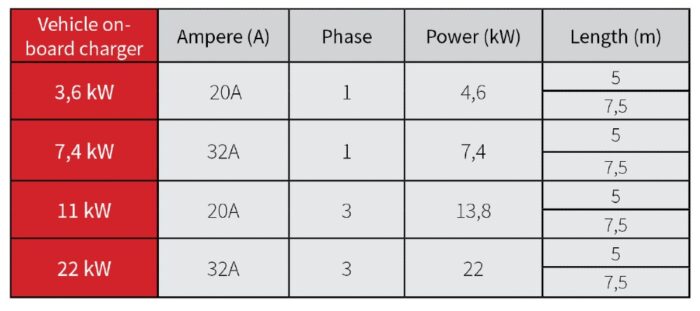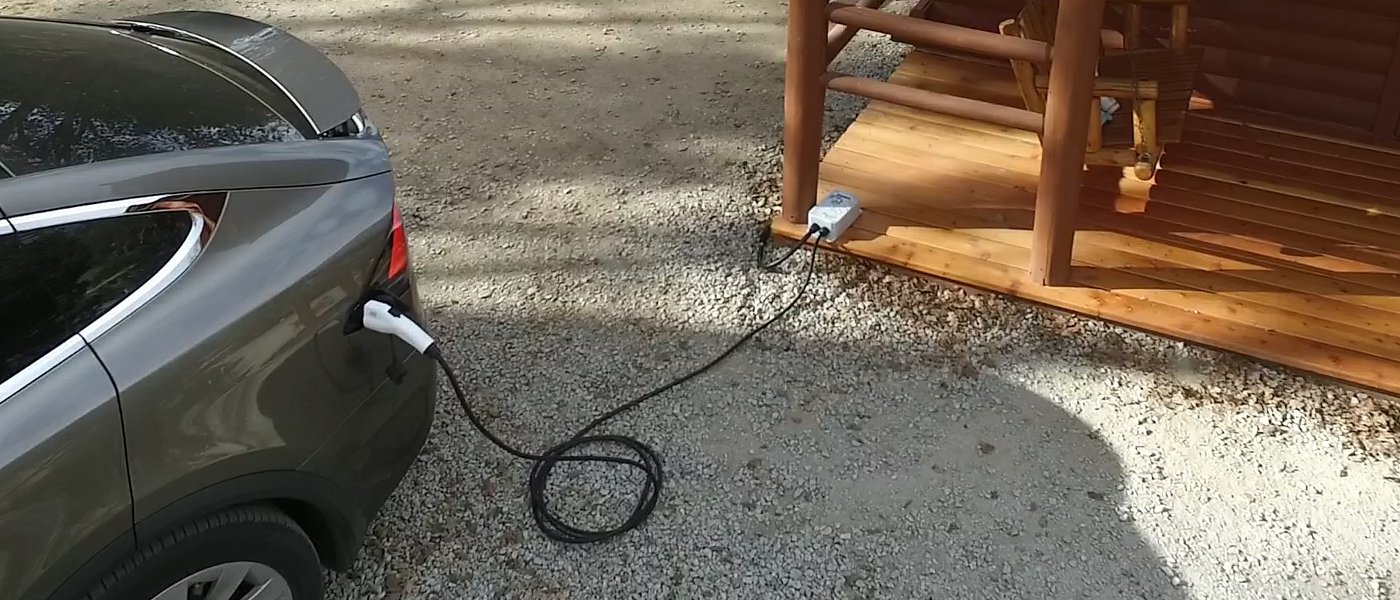Make the right choice of EV charging cables
Choosing the right EV charging cable is easier than it might seem. Our short guide helps you get the best possible charging speed, durability and user-friendliness.
What do you need to know?
If you are looking for a single cable that will give you the fastest possible charge at any charging point, there are three things you must know: That you need a Mode 3 cable, what if your car has a Type 1 or Type 2 inlet, and the capacity of its onboard charger.
Get a home charger
The very first thing you should know is that if you haven’t already, you should install a home charger. Home chargers are available with fixed cables and with outlets. No matter what you choose, you will need a cable for charging away from home.
Choose a Mode 3 EV charging cable
The Mode system goes from 1 to 4, but what you want is a Mode 3 charging cable. Mode 3 chargers are the standard for EV charging and can be used at any publically available charging point.
- Mode 1 is outdated and no longer used.
- Mode 2 cables are the standard emergency cables that are delivered with most electric vehicles. They have a regular plug for a standard wall socket at one end, a Type 1 or Type 2 at the other, and an ICCB (In Cable Control Box) in the middle. Mode 2 cables are not meant for everyday use and should only be an option in situations when there no charge point is available.
- Mode 3 is the modern standard for EV charging cables at home chargers and regular charging facilities. These charge points use regular AC, or alternating current, while fast chargers use DC, or direct current.
- Mode 4 is the system used at roadside fast chargers. There are no loose Mode 4 cables.
Choose the right Type
In the world of EV cables, Type refers to the design of the vehicle side plug, which can be either a Type 1 or Type 2. These correspond to Type 1 and Type 2 vehicle inlets. A Type 2 charging cable is the current standard. If you have a relatively new car, this is most likely what you have. Type 1 inlets can be found on older models of Asian brands, such as the Nissan Leaf 2016. If in doubt, make sure to check the inlet on your car.
Choose the right amp, kW and phase version
Getting right amps, kilowatts, and knowing if you need a 1-phase or 3-phase cable is often what new EV owners find most challenging. Fortunately, there is an easy way to make the right choice. If you’re looking for a cable that will give you the fastest possible charge at any charge point, all you have to know is the capacity of your onboard charger. Use the table below to select a cable with a kW rating equal to or higher than the capacity of your onboard charger. Note that 3-phase cables can also use 1-phase.

If you only plan to use the cable at home, you may also want to consider the kW output capacity of your home charger. If the capacity of the home charger is lower than that of your car, you can use the table above to choose a cheaper and lighter cable with the right specification. If it can only charge at 3,6 kW, there is little point in having a 32 amp / 22 kW EV charging cable, at least until you buy a new car.
Choose the right length
EV charging cables are available in different lengths, usually between 4 to 10m. A longer cable gives you more flexibility, but also heavier, more cumbersome and more expensive. Unless you know you need the extra length, a shorter cable will usually suffice.
Choose the right EV charging cable quality
All EV charging cables are not the same. There are several significant differences between high-quality and low-quality cables. Higher-quality cables are more durable, are made with better materials and stronger protections against the strains expected from everyday use.
Quality cables are also better suited for extreme conditions. One thing many cable owners will have noticed is that the cable becomes stiff and unwieldy when the temperature drops. Higher-end cables are designed to remain flexible even in severe cold, making them easier to use and stow away.
Water getting on to the terminals and into the vehicle inlet is another common problem that may cause corrosion and a poor connection over time. One way to help avoid this issue is to select a cable with a cap that doesn’t collect water and dirt when the cable is in use.
High-end cables usually also have a more ergonomic design and a better grip. For something you may use every day, usability is worth considering.
Choose recyclable
Even the most durable charging cable must be replaced in the end. When that happens, every component should be fully recycled. Unfortunately, most EV charging cable plugs are water- and impact-proofed through with a process called potting, which involves filling the interior of the plug with plastic, rubber, or resin compound. These compounds make it nearly impossible to separate and recycle the components later. Fortunately, there are cables made without potting and reusable materials that can be completely recycled after use.
Choose the right accessories
Without a bracket, strap, or bag, an EV charging cable can be difficult to store and transport tidily and safely. At home, being able to coil and hang up the cable will help you keep it out of the way and protect it from water, dirt, and being run over by accident. In the car, a bag that can be fixed in the trunk helps keep the cable stowed away and not moving during driving.
An EV charging cable is also relatively expensive and a tempting target for burglars. A lockable docking and storage unit helps you protect your cable from being stolen, while also keeping it away from the floor.
Conclusion
In short, this is what you have to know:
- Buy a home charger if you don’t have one already
- You are looking for a Mode 3 charging cable. A Mode 2 cable is nice to have as an emergency solution.
- Check the inlet type on your car model. A Type 2 charging cable is the standard for all new models, but some older Asian brands have Type 1.
- Select a cable with amp and kW ratings that correspond with or are higher than the capacity of the onboard charger in your car. If you plan only to use the cable at home, also consider the capacity of your home charger.
- Find a cable length that provides adequate flexibility without adding unnecessary cost, size, and weight.
- Invest in quality. High-end cables are more durable, easier to use, and often better protected against strains, accidents, water, and dirt.
- Do your part for the environment. Choose a fully recyclable product.
- Plan for storage and transport. Ensure that you get accessories that help you store the cable in an orderly way, protected from accidents and theft.
Post time: Mar-07-2023









